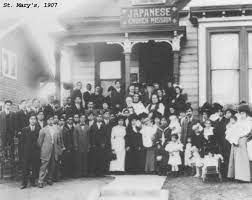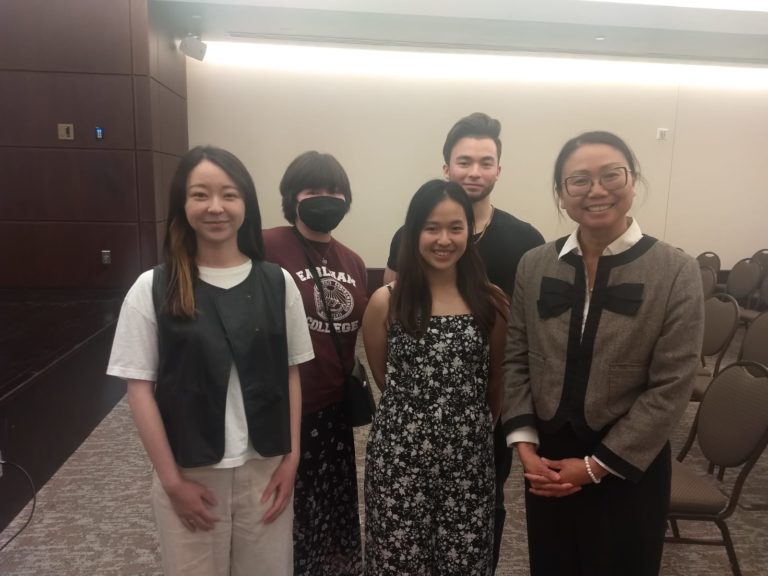
On April 20th, four students and a professor from Earlham College attended a talk by Dr. Chrissy Lau at Eiteljorg Museum in Indianapolis. Dr. Lau teaches history and social behavioral and global studies as an assistant professor at California State University Monterey Bay. The talk centered on the founder of the St. Mary’s Episcopal Church in Los Angeles, Reverend John Misao Yamazaki. In her lecture, she addressed how he and his congregation dealt with the forced relocation of Japanese Americans to concentration camps in World War II, as well as other anti-Japanese discrimination in the 1940s.
St. Mary’s Episcopal Church was founded by Mary Louise in 1907 for the purpose of ministering to Japanese immigrants in Los Angeles. Many of them were Buddhists, and Reverend John Misao Yamazaki worked to bring this community together during the first half of the 20th century. The Immigration Act of 1924 prohibited Japanese people from migrating to the US, so it was in the 1930s that Yamazaki started Christian Americanization actively. Through Executive Order 9066, Japanese internment camps were constructed during World War II. From 1942 to 1945, 120,000 people of Japanese ancestry, including U.S. citizens, were incarcerated in these camps. With the loyalty questionnaire, Japanese Americans were assessed on their level of Japanese loyalty. “It was nothing to do with loyalty,” Dr. Lau said; many Japanese Americans denied loyalty to Japan because of the potential danger they could face. Dr. Lau ended her talk by affirming that “politics of assimilation was a form of survival but at a great cost.”
“The talk was interesting because I didn’t learn much about the history of Japanese Americans in Japan,” said Momoha Hirose, a junior from Japan. She pointed out the lack of diversity in Japanese education and felt it was necessary to include perspectives of history from Japanese- Americans. Justin Degraff and Emi Hinosawa, who are seniors and each of whom has one parent from Japan, also mentioned the lack of opportunities within the school system to learn about the history behind the internment of Japanese- Americans. “It created a bridge between [the] gaps [in my understanding of] Japanese history in relation to America,” Justin said. Even though Emi was educated about Japanese internment camps by her mother, they are unsure if the stories about it are being preserved sufficiently.
Students who attended the session agreed that Japanese cultural or historical events on campus are not recognized enough for students. Justin hopes to see more accessibility and marketing for the events about Japan, especially for people who might not be familiar with Japan. Adding to it, Emi believes that languages discarded in the past should be added back. “I am worried that the Japanese language is going to be [removed from Earlham’s] curriculum,” Emi said, noting the important role language plays in learning about cultural values.

